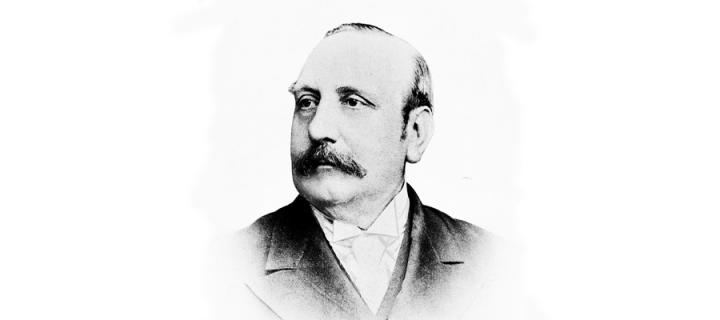Patrick Heron Watson 1832 – 1907
Eminent surgeon, pioneer of medical anaesthesia, and advocate for women working in surgery and medicine.

Sir Patrick Heron Watson was born in Edinburgh in 1832, the son of a minister and with two older brothers who would follow in their father's footsteps.
Watson, however, chose a different path and, after being educated at Edinburgh Academy, he enrolled at the University of Edinburgh, becoming a contemporary of future pioneer of antispetic treatment Jospeph Lister, and John Beddoe, who would become known for his work in ethnology.
He graduated with an MD in 1853 before taking a licentiate with the Royal College of Surgeons in Edinburgh and serving as house surgeon in the Royal Infirmary of Edinburgh.
Crimea
The outbreak of the Crimean War in January 1855 provided inspiration for Watson who felt that his skills could be well used in service. So, after enlisting as a surgeon with the Royal Artillery, he made the journey to Constantinople, being stationed in the Scutari barracks - famed for their association with Florence Nightingale.
After moving to a different barracks with a much higher mortality rate, by April 1855 Watson had contracted typhus, requiring a month-long spell of recuperation. On return to base, he requested a move to a field hospital, eventually being posted at one near Balaklava that held seventy patients. However, after six weeks he was moved again and subsequently came down with a serious bout of dysentery.
He was shipped back to Scutari, sharing a room with his brother who had also contracted the infection while serving as chaplain with the Highland Brigade.
Return to Edinburgh
Despite his hopes, Watson didn't work in the field hospitals again and was returned to England in October 1855.
There, he completed his military service at Woolwich and Aldershot, and continued in his role of Surgeon to the Royal Artillery. He then returned to Edinburgh to teach surgery at the University, while also lecturing at the Royal College of Surgeons, marrying the daughter of his supervisor there, Professor James Miller.
In 1860 he took on the role of assistant surgeon at the Edinburgh Royal Infirmary, eventually being promoted to full surgeon, a role he held for 15 years. During this time, he was one of Arthur Conan Doyle's teachers, even inspiring the creation of Doyle's character Dr Watson.
Women's advocate
In the autumn of 1870 he was one of the first to permit women to attend his extra-mural classes in surgery, doing so for a further sixteen years until one of his pupils, Sophia Jex-Blake, opened a college specifically for women.
In 1879 he helped to found the Edinburgh Dental Hospital, and again encouraged female students to join, with Lillian Lindsay becoming the first woman to graduate in Dentistry in the UK in 1895.
Honour
He was elected President of the Royal College of Surgeons of Edinburgh in 1878 and again in 1905 - the latter enabling him to serve during the College's quatercentenary celebrations, a sign of the esteem in which he was held by the Fellows.
He was also Honorary Surgeon in Scotland to both Queen Victoria and King Edward VII, and was a Fellow of the Royal College of Surgeons in Edinburgh.
Watson died at his home in Charlotte Square, Edinburgh in December 1907 and is buried in Dean Cemetery.

